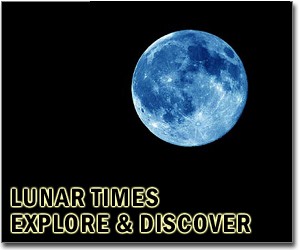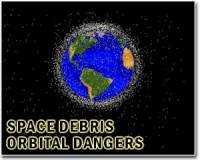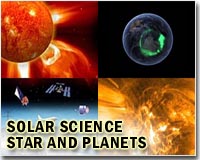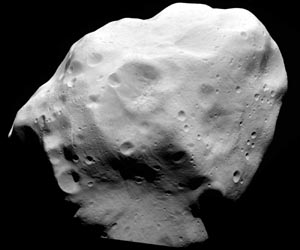|
 Scientists debate meaning of moon 'holes'
Scientists debate meaning of moon 'holes'Washington (UPI) Jul 19, 2010 U.S. scientists say photos of the moon's surface showing deep holes that may lead to tunnels offer the possibility of underground moon exploration. Huge pits on the moon, some of them hundreds of feet deep, may be openings to underground tunnels form by rivers of lave, SPACE.com reported Thursday. "They could be entrances to a geologic wonderland," researcher Mark Robinson at Arizona State University said. "We believe the giant holes are skylights that formed when the ceilings of undergr ... read more |
. |
|
|
Free Space, Earth, Energy And Military Newsletters - Delivered Daily |
| . | . |
| .. |
All Stars Are Born The Same Way Paris, France (SPX) Jul 15, 2010
Paris, France (SPX) Jul 15, 2010Astronomers have obtained the first image of a dusty disc closely encircling a massive baby star, providing direct evidence that massive stars form in the same way as their smaller brethren. This discovery, made thanks to a combination of ESO's telescopes, is described in an article in this week's issue of Nature. "Our observations show a disc surrounding an embryonic young, massive star, ... more Hubble Snaps Sharp Image Of Cosmic Concoction  Paris, France (ESA) Jul 15, 2010
Paris, France (ESA) Jul 15, 2010Strangely shaped dust clouds, resembling spilled liquids, are silhouetted against a colourful background of glowing gas in this newly released Hubble image. The star-forming region NGC 2467 is a vast cloud of gas - mostly hydrogen - that serves as an incubator for new stars. Some of these youthful stars have emerged from the dense clouds where they were born and now shine brightly, hot and ... more Fascinating Images From A New World  Munich, Germany (SPX) Jul 15, 2010
Munich, Germany (SPX) Jul 15, 2010The ESA space probe Rosetta flew past the Lutetia planetoid at around 6 p.m. CEST on Saturday. The OSIRIS camera system, built and developed under the direction of the Max Planck Institute for Solar System Research in Katlenburg-Lindau, Germany, provided unique images of this rendezvous. They not only show a large number of craters on the surface of the celestial body, but also individual ... more |
.. |
 Group warns of space debris problems  Spacecraft captures photos of sun activity  Instant online solar energy quotes Solar Energy Solutions from ABC Solar |
.. |
|
|
Free Space, Earth, Energy And Military Newsletters - Delivered Daily |
|
|
. |
 Rosetta Triumphs At Asteroid Lutetia
Rosetta Triumphs At Asteroid LutetiaParis, France (ESA) Jul 14, 2010 Asteroid Lutetia has been revealed as a battered world of many craters. ESA's Rosetta mission has returned the first close-up images of the asteroid showing it is most probably a primitive survivor from the violent birth of the Solar System. The flyby was a spectacular success with Rosetta performing faultlessly. Closest approach took place at 18:10 CEST, at a distance of 3162 km. The images show that Lutetia is heavily cratered, having suffered many impacts during its 4.5 billion years of existen ... read more |
| The contents herein, unless otherwise known to be public domain, are Copyright 1995-2010 - SpaceDaily. AFP and UPI Wire Stories are copyright Agence France-Presse and United Press International. ESA Portal Reports are copyright European Space Agency. All NASA sourced material is public domain. Additional copyrights may apply in whole or part to other bona fide parties. Advertising does not imply endorsement, agreement or approval of any opinions, statements or information provided by SpaceDaily on any web page published or hosted by SpaceDaily. Privacy statement |
| Previous Issues | Jul 20 | Jul 19 | Jul 16 | Jul 15 | Jul 14 |